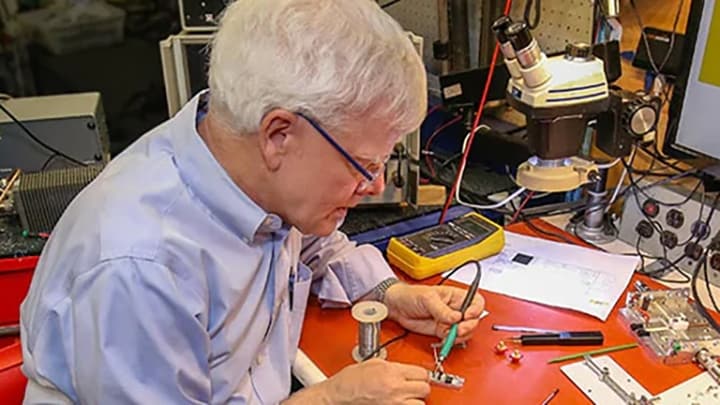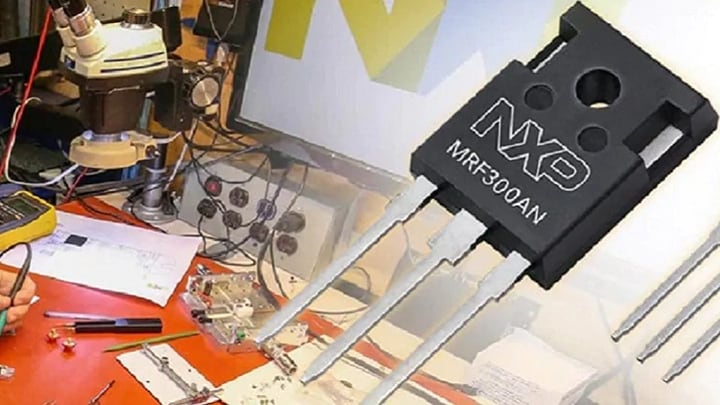Author

NXP
At NXP, innovation is always now, but our focus is always the future. Our dedicated team of experts is united by a passion to make everyday life more remarkable through technologies that continually redefine life as we know it.

In the last few years, a number of trends have helped manufacturing enter a new phase in its evolution. Dramatic increases in automation, the use of smart objects and wireless networking and the recent arrival of true cyber-physical systems (CPS), are enabling unprecedented levels of flexibility and efficiency.
How the migration to an even smarter factory has been possible?
These features are being referred to collectively as “smart manufacturing,” the “fourth industrial revolution,” or “Industry 4.0”. Whatever the term, though, the result is the same: it’s now easier to identify and differentiate products, even while working on a very large scale, and manufacturers can now access detailed, real-time data at any point in the process.
The benefits of Industry 4.0 even extend beyond the factory floor, by bringing added connectivity, intelligence, and security to the entire supply chain and by making in-store and after-sales experiences more digital and more engaging. In short, Industry 4.0 changes the way we interact with and manage products, while they’re being made, shipped, sold and used.
A number of the technologies that enable Industry 4.0 have, in fact, been around for some time. RFID, for example, has been used throughout manufacturing and the supply chain for many years, especially in inventory control and asset management.
As part of Industry 4.0, RFID is doing more. Today’s manufacturing applications are using the data stored in RFID tags in increasingly sophisticated ways, allowing for a more flexible and efficient manufacturing of customized products, and facilitating an even higher degree of automation and standardization. The result is greater overall efficiency and flexibility at a lower cost.
In comparison to other established identification technologies such as for example, active tags or
bar-codes, passive RFID tags don’t need their own power supply and are not requiring a line
of sight to be operated.
Contactless technology allows for a wide variety of form factors addressing different requirements
demanded by the application or environment. They attach to just about any object and can be
programmed with several kbit worth of data. Tag information processing takes just milliseconds and
the data can be modified over the chips life cycle.
With RFID, data becomes an asset, from production to retail and beyond. Manufacturers can leverage RFID’s contribution to “big data” and the new infrastructure that supports it. As a result, manufacturing teams can use real-time information to manage variants, for just-in-time and just-in-sequence production processes, and can gain deeper insights into production control, process optimization and quality control. Big data follows the RFID tag through the supply chain, too and can be configured to register customer interactions, too. Having instant access to such an extensive range of information gives manufacturers and brand owners a whole new way to conduct business.
RFID tags help components, products, machines and even workers operate more effectively together. This creates more opportunities for individualization, even in mass-production environments, because products can tell machines what’s needed at a given point. After each stage in the process, the machine can update product status by writing to the tag, and then send the product on to its next stage. The tag’s data can be accessed at any point, for real-time updates and analysis, and the tag’s on-chip security mechanisms can serve to prove authenticity, quality and safety, at any time. Tags can even be accessed once the product is in its package, creating options for late-stage customizations, such as language or other country specific setting, even after the package leaves the factory.
The same production machines can authenticate their own spare parts, making sure that the correct replacement is in the right position, bringing the percentage of production errors to zero.
RFID’s track and trace capabilities can increase visibility and enhance efficiency throughout the supply chain. Digital authentication helps brand owners protect against counterfeiting, grey-market diversion and can make it easier for products to pass through customs and border checkpoints.
In retail environments, RFID lets consumers verify authenticity and access details about the product, its contents and its use. After the purchase, the RFID tag can continue to create interaction between brand owners and their customers, offering information about replacement parts, warranty information and proper recycling. In this way, RFID extends Industry 4.0 into the marketplace, supporting the next evolution of e-commerce, known as the Internet of Shopping.
Within the RFID spectrum, the two formats most commonly associated with smart manufacturing are long-range RFID and vicinity RFID. Long-range RFID, which is also known as RAIN RFID, operates in the UHF band, has a read/write range of up to 15 meters and offers the fastest recognition rates. Long-range RFID is primarily reserved for use within the factory and distribution channels, since it requires a specialized reader and is used to optimize the inventory processes.
Vicinity RFID, on the other hand, works in the HF band, at 13.56 MHz, has a shorter read range (up to 1.2 meters), and has a lower tag recognition compared to long-range RFID. NFC compatible vicinity RFID tags on the other hand can be read by any NFC-enabled smartphones on the market. This makes vicinity RFID something of a crossover technology, taking RFID beyond the production and operations, up to post-sales, allowing the interaction between the product and the consumer, at any time.
NXP is a leading supplier of wireless technologies, market leader in both long-range RAIN RFID (with UCODE®) and vicinity RFID (with ICODE®). The UCODE and ICODE solutions address various Industry 4.0 applications, but represent just a portion of the overall NXP offering for smart manufacturing with advanced and optimized portfolios for embedded computing, security, sensors and micro-processors.
One of the newest additions to the mix is Near Field Communication, or NFC, which adds new levels of convenience, communication and configurability throughout the manufacturing process.
We are, as a company, big proponents of Industry 4.0, aiming to create the smart factory concept, where innovation and customization can co-exist with cutting down the operations cost and optimizing the resources all along the supply chain. Our work with manufacturers who are transitioning to Industry 4.0 has shown how smart manufacturing enables new and more user-friendly systems for production, and how makes it easier to manage development, installation, service and lifecycle processes. At the same time, reliability and safety go up while errors and failures go down. And, perhaps best of all, Industry 4.0 lets manufacturers find new ways to differentiate in a world filled with mass-produced items.
To learn more about our Industry 4.0 offerings, visit us at: www.nxp.com
Do you have direct experience with Industry 4.0 applications? Have you seen their effect on manufacturing, the supply chain and retail? How do you think RFID relates to Industry 4.0? What’s next for manufacturing? What might Industry 5.0 look like?
If you are interested to read also about the usage of NFC in Industry 4.0 applications please find
further information below:
https://www.nxp.com/company/blog/the-promise-of-nfc-for-industry-4-0:BL-PROMISE-NFC-INDUSTRY-4.0
https://www.nxp.com/company/blog/15-ways-nfc-enables-industry-4-0:BL-15-WAYS-NFC-ENABLES-INDUSTRY-4.0
http://www.nxp.com/products/identification-and-security/smart-label-and-tag-ics/ucode:MC_50483
https://www.nxp.com/products/rfid-nfc/nfc-hf/icode:MC_42024
Tags: Industrial

At NXP, innovation is always now, but our focus is always the future. Our dedicated team of experts is united by a passion to make everyday life more remarkable through technologies that continually redefine life as we know it.

October 14, 2019

November 22, 2019
by Megan Faust

March 9, 2020